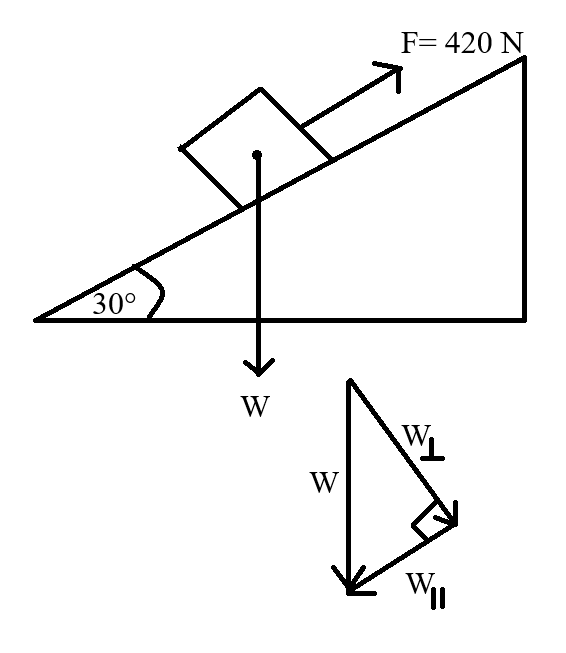Mechanics: Statics and Dynamics
Welcome to Our Site
I greet you this day,
These are the solutions to the WASSCE Further Mathematics past questions on the topics: Mechanics.
This consists of topics in Statics and Dynamics.
When applicable, the TI-84 Plus CE calculator (also applicable to TI-84 Plus calculator) solutions are provided
for some questions.
The link to the video solutions will be provided for you. Please
subscribe to the YouTube channel to be notified of upcoming livestreams. You are welcome to ask questions during
the video livestreams.
If you find these resources valuable and helpful in your passing the
Mathematics test of the WASSCE, please consider making a donation:
Cash App: $ExamsSuccess or
cash.app/ExamsSuccess
PayPal: @ExamsSuccess or
PayPal.me/ExamsSuccess
Google charges me for the hosting of this website and my other
educational websites. It does not host any of the websites for free.
Besides, I spend a lot of time to type the questions and the solutions well.
As you probably know, I provide clear explanations on the solutions.
Your donation is appreciated.
Comments, ideas, areas of improvement, questions, and constructive
criticisms are welcome.
Feel free to contact me. Please be positive in your message.
I wish you the best.
Thank you.
Symbols and Formulas
(1.) Basic Formulas
$
W = mg \\[3ex]
where \\[3ex]
W = weight\;(N) \\[3ex]
g = \text{acceleration due to gravity}\; (ms^{-2}) \\[3ex]
m = \text{mass}\;(kg) \\[3ex]
$
(2.) Basic Equations of Motion
$
(a.)\;\; v = u + at \\[3ex]
(b.)\;\; s = ut + \dfrac{1}{2}at^2 \\[5ex]
(c.)\;\; v^2 = u^2 + 2as \\[5ex]
\underline{\text{Working towards gravity}} \\[3ex]
a = g \\[5ex]
\underline{\text{Working aganist gravity}} \\[3ex]
a = -g \\[5ex]
$
where:
u = initial velocity
v = final velocity
a = acceleration
t = time
s = distance
g = acceleration due to gravity
(3.) Total Momentum
$
m_1 = \text{mass of first body} \\[4ex]
v_1 = \text{velocity of first body} \\[4ex]
m_2 = \text{mass of second body} \\[4ex]
v_2 = \text{velocity of second body} \\[5ex]
\underline{\text{Before Collision: Moving in Same Direction}} \\[4ex]
\text{momentum of first body} = m_1v_1 \\[4ex]
\text{momentum of second body} = m_2v_2 \\[4ex]
\text{total momentum} = m_1v_1 + m_2v_2 \\[5ex]
\underline{\text{After Collision: If Stuck Together}} \\[3ex]
\text{mass of: first body and second body} = m_1 + m_2 \\[4ex]
\text{common velocity} = v \\[3ex]
\text{total momentum} = v(m_1 + m_2) \\[5ex]
\underline{\text{Based on the Principle of Conservation of Momentum}} \\[3ex]
\text{total momentum before collision = total momentum after collision} \\[3ex]
m_1v_1 + m_2v_2 = v(m_1 + m_2) \\[5ex]
\underline{\text{Before Collision: Moving in Opposite Directions}} \\[4ex]
\text{momentum of first body} = m_1v_1 \\[4ex]
\text{momentum of second body} = m_2 * -v_2 = -m_2v_2 \\[4ex]
\text{The negative value of the velocity is because the second body is moving in opposite direction} \\[3ex]
\text{total momentum} = m_1v_1 - m_2v_2 \\[5ex]
\underline{\text{After Collision: If Stuck Together}} \\[3ex]
\text{mass of: first body and second body} = m_1 + m_2 \\[4ex]
\text{common velocity} = v \\[3ex]
\text{total momentum} = v(m_1 + m_2) \\[5ex]
\underline{\text{Based on the Principle of Conservation of Momentum}} \\[3ex]
\text{total momentum before collision = total momentum after collision} \\[3ex]
m_1v_1 - m_2v_2 = v(m_1 + m_2) \\[5ex]
$
(4.) Forces acting on a body
$
F_x = F \cos\theta \\[3ex]
F_y = F \sin\theta \\[3ex]
$
where:
$F$ = magnitude of the force
$F_x$ = horizontal component (x-component) of the force
$F_y$ = vertical component (y-component) of the force
θ = angle the force makes with the positive x-axis (measured counterclockwise).



